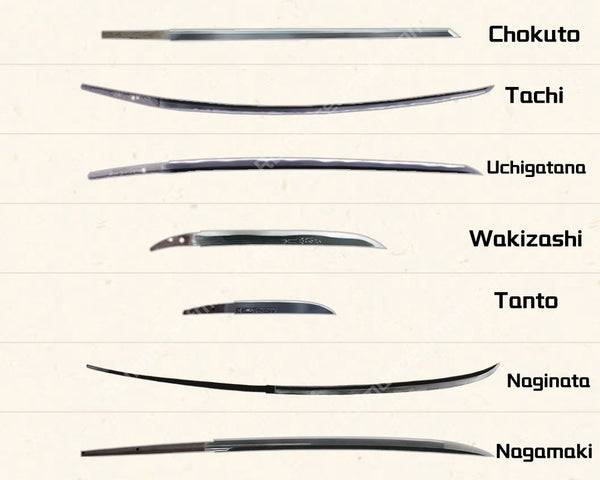What is a Short/Small Katana Called? Common Questions and Answers
What is a Short/Small Katana Called? Common Questions and Answers
The katana, a symbol of honor and precision, holds a revered place in Japanese history and culture. However, the term "katana" is often misconstrued. To truly appreciate the depth and variety of these blades, one must delve into the intricate distinctions that set each sword type apart.
Table of Content
- Introduction to the Katana Family
- The Small Katanas: Wakizashi and Tanto
- Distinguishing the Wakizashi from the Tanto
- Conclusion: An Odyssey into the World of Katanas
1. Introduction to the Katana Family

Contrary to common belief, the term "katana" doesn't exclusively refer to a single type of sword. Instead, it's a broader classification encompassing various Japanese swords. The most recognized among these, often mistaken as the sole "katana," is the uchigatana. But this is just one member of a diverse family that includes the tachi, wakizashi, tanto, naginata, and nagamaki, among others. Each of these blades has its distinct characteristics, purpose, and historical relevance.
2. The Small Katanas: Wakizashi and Tanto

When we talk about a small / short katana, in most cases it refers to Wakizashi, or sometimes refer to the even shorter blade, the tanto. In the traditional Daisho (katana set) worn by samurai, the tachi or uchigatana would be the longer blade, while the wakizashi or tanto played the role of the shorter companion sword. These shorter blades were not just backup weapons but held their distinct significance. Here is a chart to help you understand their length difference:
| Sword Type | Average Blade Length (cm/in) | Overall Length (cm/in) |
| Tachi | 75 cm / 29.5 in | 100-120 cm / 39.4-47.2 in |
| Uchigatana | 70 cm / 27.6 in | 100-110 cm / 39.4-43.3 in |
| Wakizashi | 50 cm / 19.7 in | 60-80 cm / 23.6-31.5 in |
| Tanto | 30 cm / 11.8 in | 50 cm / 19.6 in |
3. Distinguishing the Wakizashi from the Tanto

Understanding the nuances between the wakizashi and tanto provides valuable insights into their roles within Japanese martial culture:
- Size and Shape: The wakizashi generally measures between 30 and 60 cm, making it considerably longer than the tanto, which typically ranges from 15 to 30 cm. The wakizashi's blade carries a slight curve, much like its larger counterpart, the uchigatana. In contrast, the tanto often appears more straight-edged, closely resembling a knife.
- Purpose: The wakizashi was more than just a secondary weapon. It played various roles, from being a sidearm in close quarters to its use in ritualistic contexts. The tanto, with its compact form, was primarily a stabbing instrument, ideal for puncturing Japanese armor or close self-defense. Beyond the battlefield, it was also a symbol of status and an integral part of a samurai's daily attire, tanto was used in seppuku—a form of ritual suicide.
- How They're Worn: Both the wakizashi and tanto were worn edge-up, thrust through an obi (belt). Their positioning facilitated quick draw, especially in constrained spaces where drawing a longer sword would be cumbersome. The wakizashi was often paired with the uchigatana or tachi, forming the traditional daisho (literally "big-little") set, indicative of a samurai's status and honor.
4. Conclusion: An Odyssey into the World of Katanas
The world of Japanese swords is vast and filled with intricate details, a testament to the craftsmanship and philosophy of a bygone era. While the longer blades like the uchigatana and tachi often steal the limelight, the shorter wakizashi and tanto carry their unique charm and significance.
Diving deeper into the realm of katanas, beyond popular perceptions, reveals a rich tapestry of history, culture, and martial artistry. It's indeed a rewarding experience to understand and appreciate the various facets of these iconic blades. Knowledge about these swords isn't just about identifying them but recognizing the stories, values, and traditions they symbolize.
Extend reading: Learn more about Tanto





















